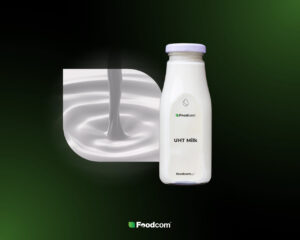Summary
Table of contents
Read our report on the Indian dairy market. Take a look at the projections for various dairy items in 2021 and see how they compare to the previous season. Discover the key buyers of Indian dairy goods and the initiatives to expand the export market. Read also about the future of the Indian dairy sector and what challenges lay ahead.
In 2021, cow milk production in India is projected to reach 96 million tonnes – compared to the output of 93.8 million tonnes in the previous year. The country is estimated to rank as the third-largest cow milk producer owing a 17.7% share of the global production in 2021. India’s share of cows in milk is projected to be 58 million – up by 2.7% from last year and equal to 41.8% of the global head. Data shows that cow milk yield in India is much lower than in other countries. Other milk output in India is estimated at 101 million tonnes up by 2% compared to last year and owning 91.6% share of the global market.
In 2021, the production of butter is expected to increase by 3.3% from the previous year to 6.30 million tonnes. Indian butter is consumed almost entirely within the domestic market. In 2021, Indian production of SMP is expected to grow by 3% compared to the previous year reaching around 680,000 tonnes and owing 13.5% of the global output.
Key buyers of Indian dairy products include the United Arab Emirates, Bangladesh, the U.S., Bhutan, Singapore, and Saudi Arabia. In recent years, India has been actively persuading the development of its dairy export sector through various governmental initiatives. During the pandemic, one of the major issues for dairy producers was skyrocketing shipping costs which have increased threefold within one year. Recently, a revised assistance scheme was announced which will aid dairy producers with shipping their products. The manufacturers will receive financial support to cover the freight costs – the government will cover 50% of these costs if dairy products are exported from India by sea. The scheme will be in place until March 2022 and is expected to significantly improve the Indian dairy sector. Moreover, India and the U.S. both agree on the need to establish a clear trade architecture between them and will likely seek suitable agreements in the near future. The U.S. has expressed an increased interest in Indian farm products, including dairy goods.
In the first half of 2021, India decreased its butter deliveries to the U.S. by over 36% compared to the same period in the previous year. However, the country still ranked as the second-largest supplier of butter to America with 4,538 tonnes of the product. At the same time, Indian yogurt shipments to the U.S. increased by over 21% to a total of 135 tonnes while WMP deliveries dropped by over 96% to 7 tonnes. The Indian government is also seeking trade deals with Australia, Canada, and the UK. Despite an almost 44% drop in butter deliveries to Australia, India is still the country’s key supplier of the product.
In terms of imports, India has imported dairy goods for the value of $ 12.40 million in 2021 up from $ 11.34 million in the previous year. However, the numbers are much lower compared to the imports of dairy goods in the previous years. India is mainly interested in purchasing dairy feed products to cover the demand for animal forage. The country has purchased a total of 6,043 tonnes of whey powder from European suppliers in the first half of 2021. Key suppliers include France, Germany, and Poland. At the same time, India was the top buyer of lactose pharmaceutical from New Zealand with 3.073 tonnes of the product acquired between January and August 2021. India has also increased imports of whey protein isolate from New Zealand by 18.33% from last year to 1.265 tonnes and has therefore ranked as the fourth-largest buyer of the product.
Within the next five years, the Indian dairy market is expected to grow at 15.4% CAGR. Domestic milk consumption will likely continue to increase with consumers being more interested in the product’s origin and animal welfare. Surges in demand for products such as ghee, butter, cheese, and milk powder are expected. The Indian dairy market is also facing an influx of new startups aiming to revolutionize and digitize the sector. However, they will face some challenges as consumers are loyal to well-established local brands. Governmental aid programs for dairy producers are ongoing and intend to support the sector in several challenges. The initiatives are designed to modernize the dairy sector technology, educate and raise awareness among the farmers, contain the spread of livestock diseases, and implement tracking techniques.
Production
In 2021, cow milk production in India is projected to reach 96 million tonnes – compared to the output of 93.8 million tonnes in the previous year. The country is estimated to rank as the third-largest cow milk producer owing a 17.7% share of the global production in 2021. India’s share of cows in milk is projected to be 58 million – up by 2.7% from last year and equal to 41.8% of the global head. Data shows that cow milk yield in India is much lower than in other countries. Other milk output in India is estimated at 101 million tonnes up by 2% compared to last year and owning 91.6% share of the global market.
In 2021, the production of butter is expected to increase by 3.3% from the previous year to 6.30 million tonnes. Indian butter is consumed almost entirely within the domestic market. In 2021, Indian production of SMP is expected to grow by 3% compared to the previous year reaching around 680,000 tonnes and owing 13.5% of the global output.
International trade
Key buyers of Indian dairy products include the United Arab Emirates, Bangladesh, the U.S., Bhutan, Singapore, and Saudi Arabia. In recent years, India has been actively persuading the development of its dairy export sector through various governmental initiatives. During the pandemic, one of the major issues for dairy producers was skyrocketing shipping costs which have increased threefold within one year. Recently, a revised assistance scheme was announced which will aid dairy producers with shipping their products. The manufacturers will receive financial support to cover the freight costs – the government will cover 50% of these costs if dairy products are exported from India by sea. The scheme will be in place until March 2022 and is expected to significantly improve the Indian dairy sector. Moreover, India and the U.S. both agree on the need to establish a clear trade architecture between them and will likely seek suitable agreements in the near future. The U.S. has expressed an increased interest in Indian farm products, including dairy goods.
Export
In the first half of 2021, India decreased its butter deliveries to the U.S. by over 36% compared to the same period in the previous year. However, the country still ranked as the second-largest supplier of butter to America with 4,538 tonnes of the product. At the same time, Indian yogurt shipments to the U.S. increased by over 21% to a total of 135 tonnes while WMP deliveries dropped by over 96% to 7 tonnes. The Indian government is also seeking trade deals with Australia, Canada, and the UK. Despite an almost 44% drop in butter deliveries to Australia, India is still the country’s key supplier of the product.
Import
In terms of imports, India has imported dairy goods for the value of $ 12.40 million in 2021 up from $ 11.34 million in the previous year. However, the numbers are much lower compared to the imports of dairy goods in the previous years. India is mainly interested in purchasing dairy feed products to cover the demand for animal forage. The country has purchased a total of 6,043 tonnes of whey powder from European suppliers in the first half of 2021. Key suppliers include France, Germany, and Poland. At the same time, India was the top buyer of lactose pharmaceutical from New Zealand with 3.073 tonnes of the product acquired between January and August 2021. India has also increased imports of whey protein isolate from New Zealand by 18.33% from last year to 1.265 tonnes and has therefore ranked as the fourth-largest buyer of the product.
Market outlook and challenges
Within the next five years, the Indian dairy market is expected to grow at 15.4% CAGR. Domestic milk consumption will likely continue to increase with consumers being more interested in the product’s origin and animal welfare. Surges in demand for products such as ghee, butter, cheese, and milk powder are expected. The Indian dairy market is also facing an influx of new startups aiming to revolutionize and digitize the sector. However, they will face some challenges as consumers are loyal to well-established local brands. Governmental aid programs for dairy producers are ongoing and intend to support the sector in several challenges. The initiatives are designed to modernize the dairy sector technology, educate and raise awareness among the farmers, contain the spread of livestock diseases, and implement tracking techniques.
Categories:







